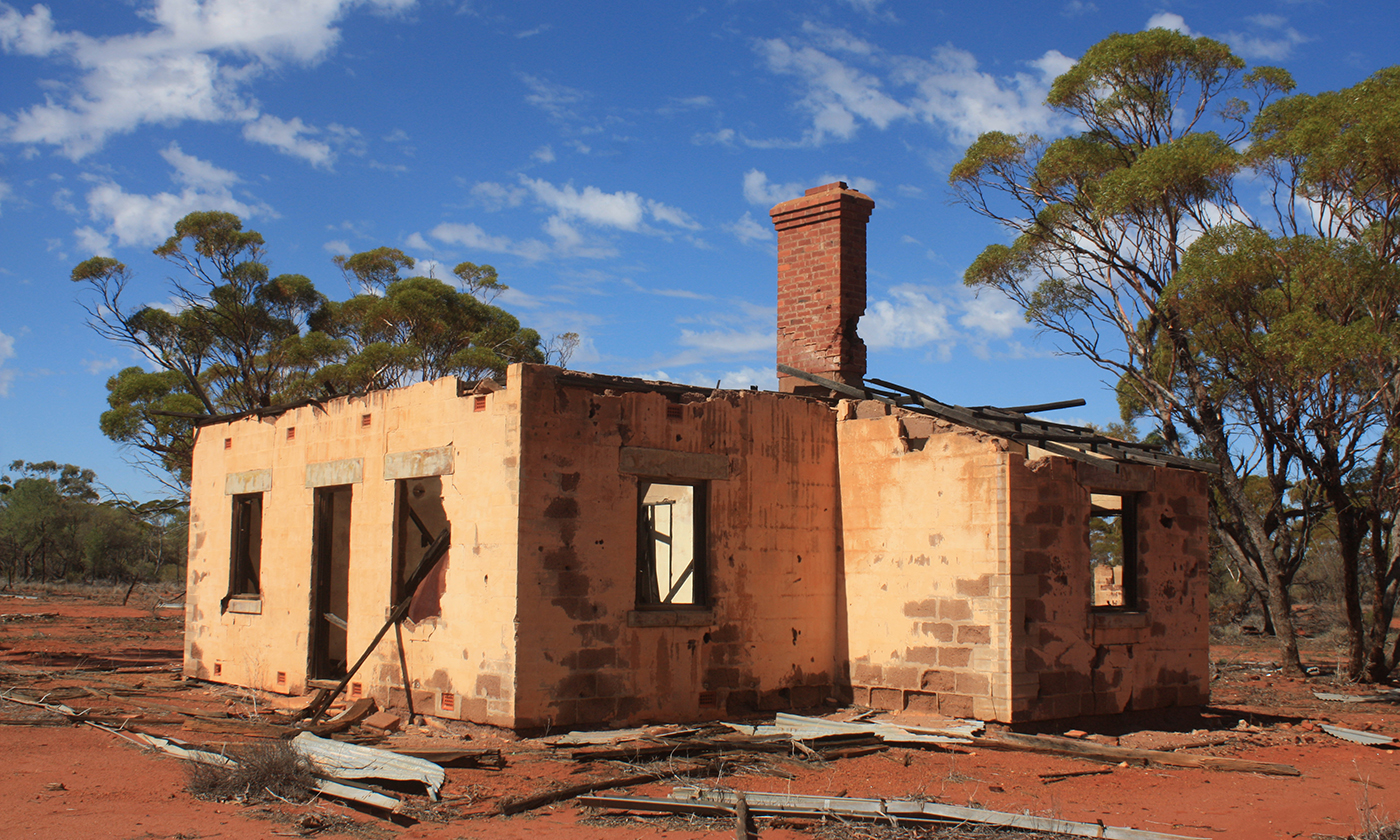Rothsay Heritage Trail
Please be aware that there are now mining operations in the Rothsay area, so please take extra care around the site, obey all signage that is displayed and do not enter any areas marked restricted as this could lead to legal action and is in breach of personal safety.
Rothsay Ghost Town
Rothsay is a true gold mining ghost town. All that is left now are some deserted buildings including the mine manager’s house and strong room, the foundations of the gold battery and the, and the derelict shaft are reminders of the 1890s gold fever. Please note many of the old mine shafts remain, so care must be taken when walking around the old town site.
Rothsay Heritage Trail
The Rothsay Heritage Trail is a 180km self-guided drive which traces the early history of Perenjori and Rothsay and their links to gold mining and agricultural development. For the more adventurous travellers, you may like to try the four wheel drive experience version of the trail. This alternative takes you the back way to Rothsay Mine.

History
In 1894, George Woodley became the first man to strike gold in the Perenjori district, 10 miles east of Damperwah Springs at Rothsay (77km from Perenjori). Within a year, all leases had been pegged and by 1897 many of the valuable claims had been acquired by the Glasglow Syndicate. During this time, the Rothsay town site supported over 300 residents. Gold was sent to Yalgoo for treatment and then transported to Perth, however, the presence of copper in much of the ore caused difficulties in extraction and the mine was shut down in 1902.
From the discovery of gold in 1894 to the closing down of the mine in 1902, over 90,000 ounces of gold were extracted from the region, some of which came from the most notable gold seam discovery, which was estimated at 200ft long. Rothsay experienced a second lease of life during the 1930s when a company financed by the flamboyant mining entrepreneur Claude de Bernales reopened the mine in 1935.
Although the mine operated productively for several years, water in the shaft caused problems and it was forced to close in 1939.